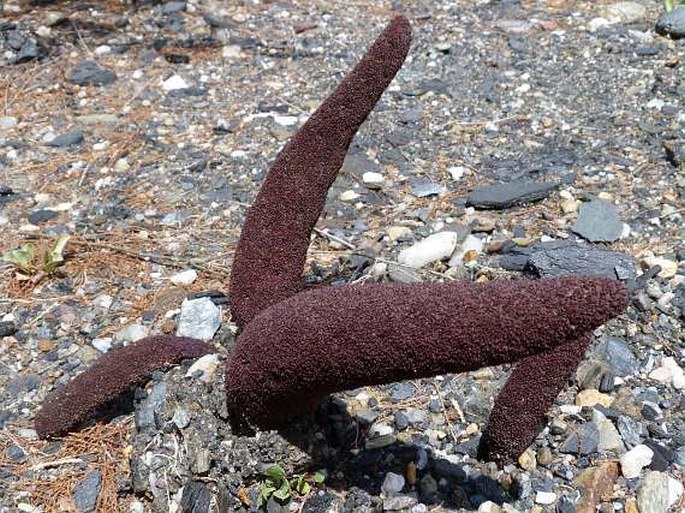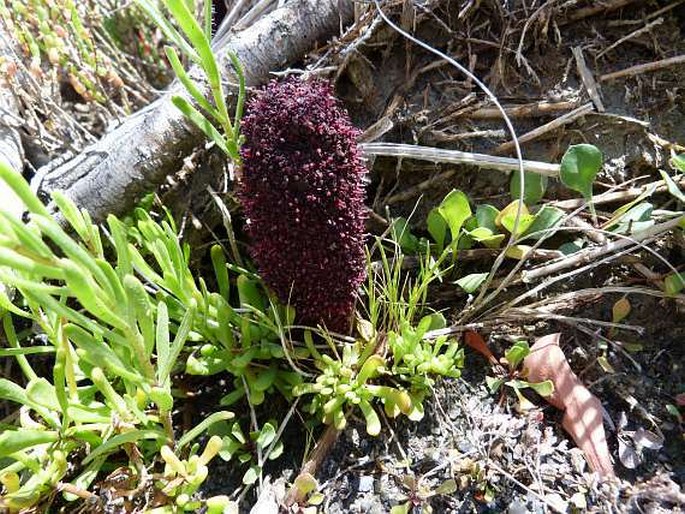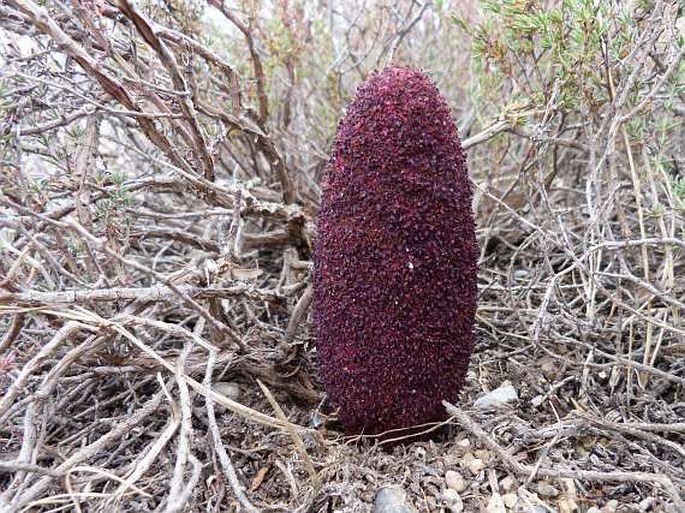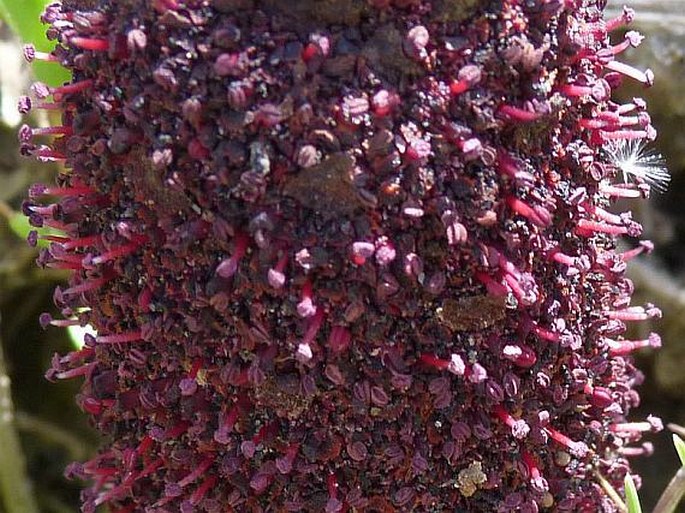Family: Cynomoriaceae Lindl.

Distribution: Mediterranean region, Macaronesia, Arabian Peninsula, Western Asia – from the Canary Islands (Lanzarote) and Portugal through Italy, Syria and Kuwait to Iran and Pakistan.
Ecology: Parasitic on various plants, usually in saline habitats. It blooms from April to June.

Description: Perennial herbs without chlorophyll, dark red to purplish-black, parasitic on the roots of other plants. Stems 15–30 cm, arising from a branched, underground rhizome, erect, stout, fleshy, bearing numerous triangular-lanceolate scale-leaves. Inflorescence terminal, 6–12 cm long and 2–4 cm wide, cylindrical-clavate, with a stout, fleshy axis on which are numerous dense, subcapitate cymes subtended by triangular-peltate, deciduous bracts. Perianth of 1–5 linear to cuneate or oblanceolate segments. Fruit a small, 1-seeded nut.
Use: The Maltese Mushroom has been known as survival food in times of famine, but it was also known for a wide range of medicinal properties. In the 17th century only members of the Order of St. John had the sole control of trade and production of the Maltese Mushroom.
Threat and protection: The Maltese Mushroom is a protected species in the Maltese Islands.
Note: The family Cynomoriaceae contains the single genus with 2 species (Cynomorium coccineum and C. songaricum).



These images were taken in Spain, Andalusia, Desierto de Tabernas (April 25, 2011) and Cabo de Gata (April 26, 2011).


